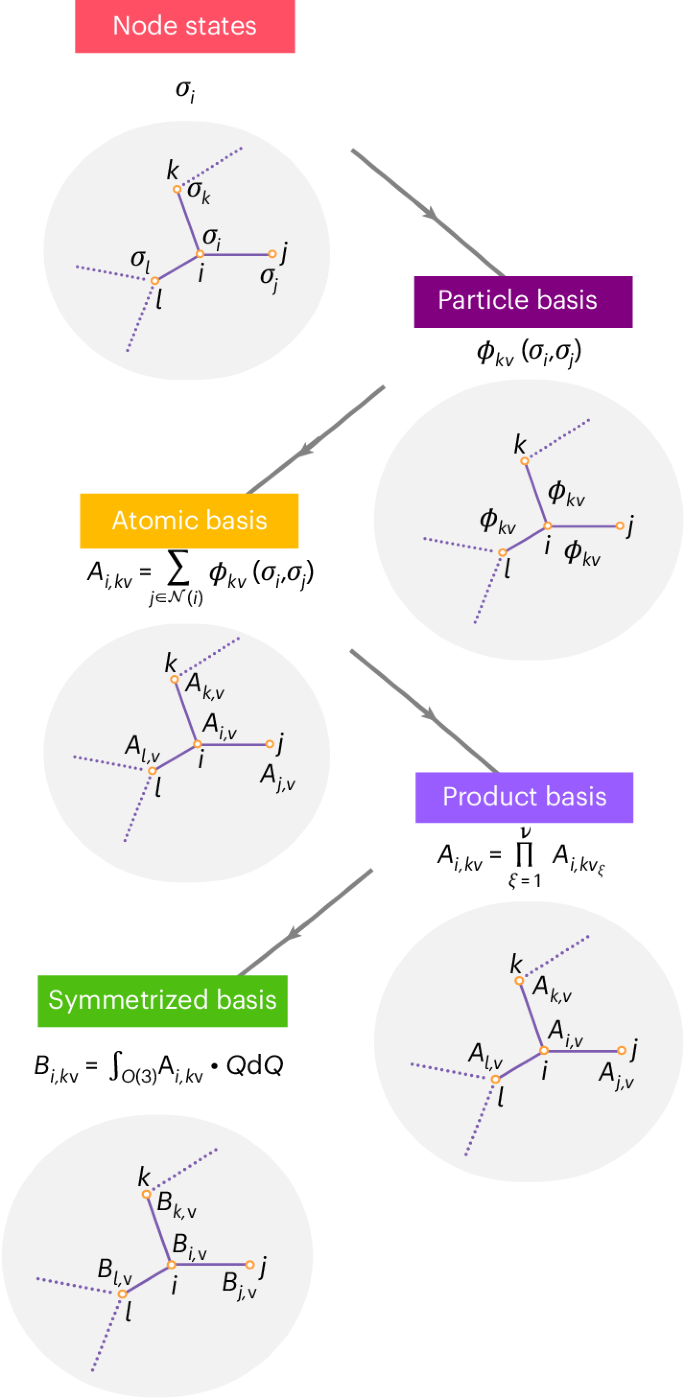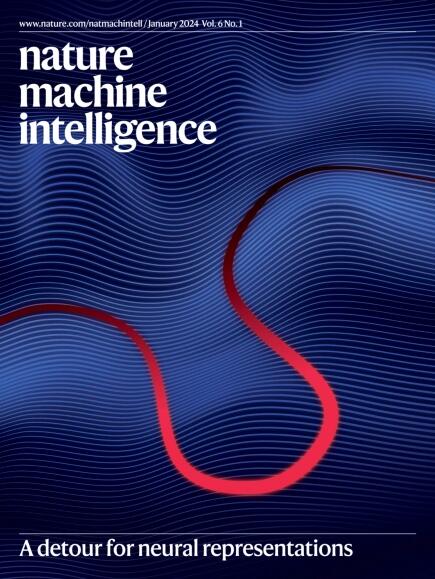E(3)-等变原子中心原子间势的设计空间
IF 18.8
1区 计算机科学
Q1 COMPUTER SCIENCE, ARTIFICIAL INTELLIGENCE
引用次数: 0
摘要
分子动力学模拟是计算材料科学和化学领域的重要工具,在过去十年中,机器学习为分子动力学模拟带来了革命性的变化。机器学习在原子间势能方面的快速进步在过去几年中产生了许多新的架构。其中尤为突出的是原子团簇扩展和神经等变原子间势(NequIP),前者统一了许多早期基于原子密度描述符的想法,后者则是一种具有等变特征的消息传递神经网络,在当时表现出了最先进的准确性。在这里,我们构建了一个统一这些模型的数学框架:原子簇扩展被扩展并重塑为多层结构中的一层,而 NequIP 的线性化版本则被理解为一个更大的多项式模型的特定稀疏化。我们的框架还提供了一种实用工具,可用于系统地探测这一统一设计空间中的不同选择。通过对域内和域外精度以及远离训练数据的平滑外推法进行一系列实验,对 NequIP 进行了消融研究,从而揭示了哪些设计选择对实现高精度至关重要。我们将 NequIP 的简化版本称为 BOTnet(体有序张量网络),它具有可解释的架构,并能在基准数据集上保持准确性。本文章由计算机程序翻译,如有差异,请以英文原文为准。


The design space of E(3)-equivariant atom-centred interatomic potentials
Molecular dynamics simulation is an important tool in computational materials science and chemistry, and in the past decade it has been revolutionized by machine learning. This rapid progress in machine learning interatomic potentials has produced a number of new architectures in just the past few years. Particularly notable among these are the atomic cluster expansion, which unified many of the earlier ideas around atom-density-based descriptors, and Neural Equivariant Interatomic Potentials (NequIP), a message-passing neural network with equivariant features that exhibited state-of-the-art accuracy at the time. Here we construct a mathematical framework that unifies these models: atomic cluster expansion is extended and recast as one layer of a multi-layer architecture, while the linearized version of NequIP is understood as a particular sparsification of a much larger polynomial model. Our framework also provides a practical tool for systematically probing different choices in this unified design space. An ablation study of NequIP, via a set of experiments looking at in- and out-of-domain accuracy and smooth extrapolation very far from the training data, sheds some light on which design choices are critical to achieving high accuracy. A much-simplified version of NequIP, which we call BOTnet (for body-ordered tensor network), has an interpretable architecture and maintains its accuracy on benchmark datasets. Batatia and colleagues introduce a computational framework that combines message-passing networks with the atomic cluster expansion architecture and incorporates a many-body description of the geometry of molecular structures. The resulting models are interpretable and accurate.
求助全文
通过发布文献求助,成功后即可免费获取论文全文。
去求助
来源期刊

Nature Machine Intelligence
Multiple-
CiteScore
36.90
自引率
2.10%
发文量
127
期刊介绍:
Nature Machine Intelligence is a distinguished publication that presents original research and reviews on various topics in machine learning, robotics, and AI. Our focus extends beyond these fields, exploring their profound impact on other scientific disciplines, as well as societal and industrial aspects. We recognize limitless possibilities wherein machine intelligence can augment human capabilities and knowledge in domains like scientific exploration, healthcare, medical diagnostics, and the creation of safe and sustainable cities, transportation, and agriculture. Simultaneously, we acknowledge the emergence of ethical, social, and legal concerns due to the rapid pace of advancements.
To foster interdisciplinary discussions on these far-reaching implications, Nature Machine Intelligence serves as a platform for dialogue facilitated through Comments, News Features, News & Views articles, and Correspondence. Our goal is to encourage a comprehensive examination of these subjects.
Similar to all Nature-branded journals, Nature Machine Intelligence operates under the guidance of a team of skilled editors. We adhere to a fair and rigorous peer-review process, ensuring high standards of copy-editing and production, swift publication, and editorial independence.
 求助内容:
求助内容: 应助结果提醒方式:
应助结果提醒方式:


